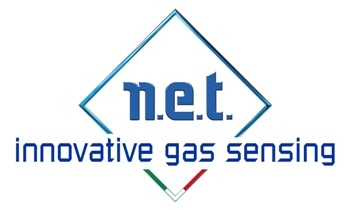There are a number of similarities between landfill gas (LFG) and biogas in both how they are created and their structure.
.jpg)
They are also alike in that each can be seen as both a resource and a hazard, with the difference between these being a matter of suitable monitoring and management.
Overview of Landfill Gas and Biogas
Their creations take place through an essentially similar process - anaerobic digestion created by the breakdown of organic matter in the absence of oxygen. As such, their structure and calorific value when burnt are extremely alike, as they are each thought of as renewable energy sources.
A number of different raw materials can be a source for biogas, including manure, plant material, green waste, food waste, agricultural waste, municipal waste and sewage. LFG, on the other hand, is produced through the anaerobic degradation of the organic fraction of solid urban waste within a landfill.
The gases are chiefly made up of methane (CH4) and carbon dioxide (CO2), both greenhouse gases, and can also contain minor traces of hydrogen sulphide (H2S), moisture and other volatile organic compounds (VOCs).
The capture of LFG and biogas helps to stop the release of compounds, which are environmentally harmful, into the atmosphere. When considering the potential for global warming, it should be noted that landfills are thought to be the third largest source of methane in the US, a gas that is more than 25 times as harmful to the atmosphere as carbon dioxide.
Once the gases have been captured, they can be either combusted or oxidized with oxygen. This is frequently combined with purification and upgrading processes ahead of use so as to separate the CO2 and ensure greater energy content per volume.
The release of energy enables the use of biogas as a fuel for heating purpose. Alternatively, it can be employed in a gas engine to convert the energy in electricity and heat. Using biogas and LFG to create energy, rather than fossil fuels, results in a substantial reduction in the levels of CO2 production.
As these gases can be both toxic and highly flammable, it has been necessary to develop monitoring techniques to lower the level of risk. Both methane and CO2 levels are measured with detectors, along with surface and sub-surface monitoring, and monitoring of the ambient air.
High-Volume IRNET Sensors
For large landfills in the US, the installation of gas collection and control systems is mandatory, meaning that as a minimum, the facilities must collect and flare the gas. The owners and operators of landfills must ensure that the methane gas concentration does not go above 25% of the LEL for methane in the structures of the facility, and the LEL for methane at the facility boundary.
For uses such as this, N.E.T. high volume IRNET sensors are a perfect solution. They are highly resistant to the acid gases linked to this usage, thanks to their sturdy stainless steel structure and the optical detection technique, which does not result in physical or chemical depletion of the sensing element.
.jpg)
The exclusive Dynamic Range technology guarantees peak performances and unparalleled accuracy across the entire 0…100% range. They can be purchased in ATEX or IECEx certified versions for maximum safety and can be used in classified areas.
Applications of IRNET Sensor Range
An increasing number of instrument manufacturers around the industry are opting for these sensors for constant monitoring systems and safety-related detectors. The N.E.T. IRNET sensor range includes solutions to monitor CH4 and CO2 with concentrations up to 100% volume.

This information has been sourced, reviewed and adapted from materials provided by Nano Environment Technology (N.E.T).
For more information on this source, please visit Nano Environment Technology (N.E.T).